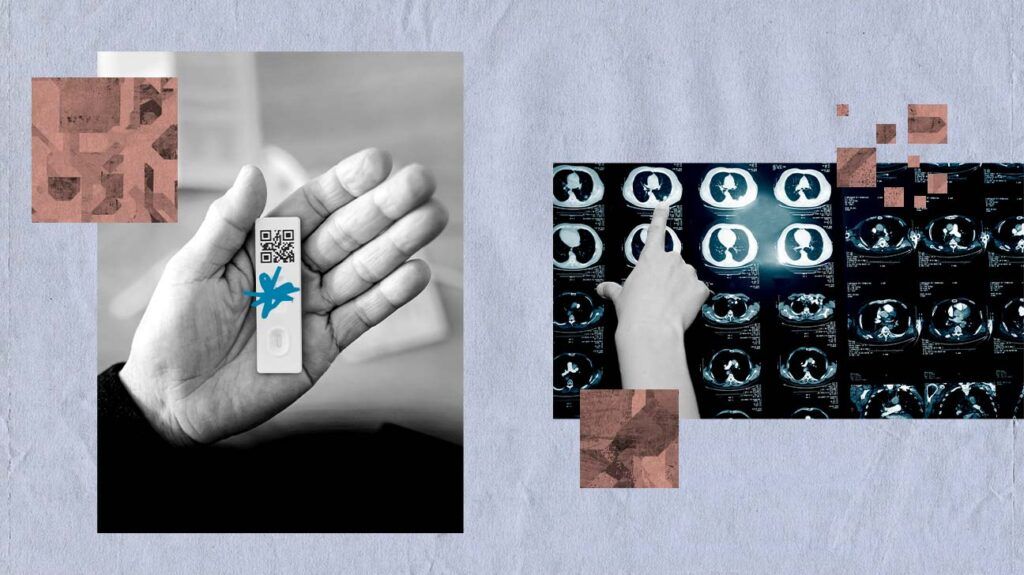Cases of COVID-19, particularly severe ones, may increase a person’s risk of developing a pulmonary embolism.
COVID-19 is a highly contagious, rapidly spreading illness. It can cause pneumonia, cold, or flu-like symptoms. The condition is often mild, but in some cases, it can be severe or even fatal.
The virus can affect several areas of the body. Even people with mild or no symptoms may develop long lasting issues.
A pulmonary embolism is a blood clot that breaks free and travels to the lungs. The clot cuts off blood supply to the lungs and can be fatal.
Several studies suggest that having COVID-19 may increase a person’s risk of developing a pulmonary embolism.
This article explores what scientists have learned about COVID-19 and pulmonary embolism.

Several studies examined how COVID-19 may connect to pulmonary embolism. Researchers started exploring this relationship in 2020, during the height of the pandemic.
In a
In a 2021 study of over 400 people with COVID-19 in a hospital setting, researchers diagnosed pulmonary embolism in 25% of the individuals, or just over 100. They noted that their findings were a bit higher than those of other studies and reports. In other studies, this figure was about 17% overall and 21% among people with severe cases of COVID-19.
They also noted that people assigned male at birth had a higher overall risk of developing a pulmonary embolism. Additionally, people with severe infection may have a higher risk of developing a pulmonary embolism.
A
Studies also explore how having a pulmonary embolism increases mortality and severe infection risk in those who develop COVID-19.
In a
- increased in-hospital mortality
- septic shock
- longer length of hospital stay
- respiratory failure
Another
It may not be possible to prevent all cases of pulmonary embolism associated with COVID-19.
The long-term complications of COVID-19
To reduce the risk of pulmonary embolism due to COVID-19, a person should consider a COVID-19 vaccination and stay up to date on booster shots. These can help reduce the risk of infection as well as the potential severity of infection if it occurs.
Some general ways to help prevent DVT, which can lead to pulmonary embolism,
- moving around every 1–2 hours
- maintaining a moderate weight
- avoiding a sedentary lifestyle
- moving around whenever possible following illness, surgery, or prolonged bed rest
- wearing loose-fitting clothes
- discussing medication or compression stockings with a healthcare professional if risk factors are present
Not everyone who has COVID-19 will need treatment or screening for pulmonary embolisms.
The National Institutes of Health’s Antithrombotic Therapy in Patients With COVID-19 guidelines provide the following recommendations regarding pulmonary embolism and COVID-19:
- Not enough evidence exists to support or contest routine screenings for thrombotic events when a person does not present with signs or symptoms.
- People taking anticoagulants should continue taking their medication unless directed otherwise.
- Prior to adding anticoagulant medications, healthcare professionals should review all medications to prevent interactions.
- When imaging is not possible, healthcare professionals should start anticoagulant therapy in people with COVID-19 and a higher risk of DVT.
- People not hospitalized for COVID-19 should not receive anticoagulant therapy.
Research indicates that people with the highest risk of a pulmonary embolism with COVID-19 are those with severe infection or those who are hospitalized for the infection.
People already taking anticoagulant medication for other conditions
The following sections provide answers to some frequently asked questions about pulmonary embolisms and COVID-19.
What is the life expectancy after pulmonary embolism?
The average life expectancy following a pulmonary embolism can vary.
Healthcare professionals use a pulmonary embolism severity scale when determining the chances a person will survive for
A score of 65 or less on the scale means a person has a 1–6% chance of dying within 30 days. A score of 125 or more means a person has a 10 to 24.5% chance of dying within 30 days following a pulmonary embolism.
What are the chances of surviving a blood clot in the lung?
Pulmonary embolism is the
Prompt treatment can help improve a person’s chances of survival.
The type of blood clot can influence survival. According to an older study from 2013, nearly
Long-term follow-up studies show that cancer is the leading cause of death in 3- and 5-year follow-ups.
Are blood clots in the lungs common with COVID-19?
Several
Scientists generally consider COVID-19 a risk factor for pulmonary embolism. People with severe cases and those who are hospitalized for COVID-19 may have a greater risk.
A person may not be able to prevent a pulmonary embolism due to COVID-19 infection. However, getting the vaccination and boosters may help prevent infection or severe infections.
